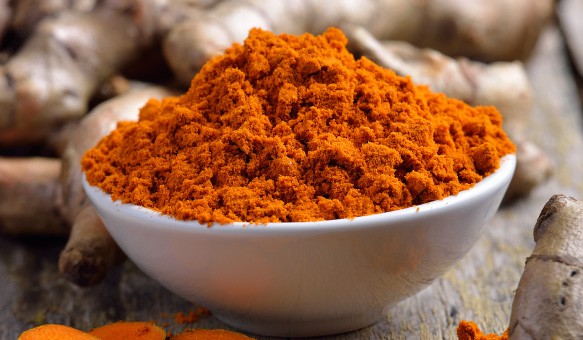
Turmeric has been used in Indian and Chinese medicine for centuries. Also known as Curcuma longa, it belongs to the ginger family.
Curcumin is the yellowish/orangish powder which gives turmeric its beautiful color in curry powder. In some Asian cuisine, especially in Indian food, turmeric is used extensively for cooking purposes.
It is widely used in many regions of the world for its pain-relieving features, improving digestion and liver functions. Due to its anti-inflammatory nature, it is also used in treating bruises, aches and much more.
Contents
Health benefits of turmeric
Turmeric has shown to promote good health and prevent diabetes. The antioxidant properties in turmeric help fight infection and inflammation. A combination of study review by Beijing University of Chinese Medicine and McGill University show that the use of turmeric can treat diabetes related complications such nephropathy, retinopathy and microangiopathy.
Another study shows the effects of turmeric on triple-negative breast cancer. In this study, researchers concluded that curcumin, the bright yellow active ingredient in turmeric, can potentially inhibit the proliferation of TNBC cells “possibly due to a change in the signaling pathway of the cancer's underlying molecular mechanism.”
Turmeric is also found to have properties which improve the skin’s hydration. One study, where the extracts of turmeric were used on damaged skin for six consequent weeks, showed subjects with improvements in hydration and in the sebaceous glands (which has lubricating properties) of their skin.
In brief, some of the most fascinating positive health benefits of turmeric are the following:
- Anti-inflammatory
- Relieves pain (including joint pain, arthritis)
- Improves digestion
- Improves liver functioning
- Fights cancer
- Reduces the swelling of joints
- Reduces oxidative stress
- Helps in weight loss
- Lowers blood sugar and cholesterol levels
- Decreases the risk of heart diseases
Is turmeric consumption good in the management of diabetes?
Curcumin can alleviate the following activities related primarily to diabetes: higher blood sugar levels and the inability for the body to respond to the insulin.
In patients with Type 1 diabetes, inflammation and slow cell death destructs pancreatic cells. Inflammation in the pancreas causes the malfunctioning of insulin in the body. Additionally, it also contributes to insulin resistance. Turmeric’s anti-inflammatory property can modulates protein's activities and their pathways in the body.
Turmeric plays a key role in reversing pancreatic damage in people with diabetes. Dysfunctional beta cells in the pancreases, where insulin is known to be produced, can be repaired with the consumption of turmeric, which therefore can reverse the damage to the pancreas. All this to say that turmeric is great in stabilizing blood sugar levels which can make diabetes more manageable.
Furthermore, turmeric has shown to reduce oxidative stress. Oxidative stress happens when the body loses balance between its natural antioxidant defences and the production of reactive oxygen species. Reactive oxygen species are oxygen containing molecules which bring vitality to the functioning of normal cells. When these oxygen species increase in number, they can cause inflammation and cell death. Neither is good. Turmeric use increases the levels of enzymes called the antioxidant. This helps in reducing the oxidative stress found in diabetes.
It helps with the following in diabetes management:
- Repair and regenerate pancreas cells
- Lower blood sugar levels
- Lower oxidative stress
- Decrease inflammation
- Lower cholesterol
Controlling blood sugar
Research has shown that turmeric can be used effectively to treat high blood sugar levels. A 2013 study shows that curcumin helps in decreasing blood sugar levels as well as other complications caused by diabetes. The study consisted of rats; therefore more research needs to be on done human models.
The administration of turmeric for 56 days resulted in a decrease in blood levels in rats. The study also employed the same model on diabetic mice to show how effective the use of curcumin is on glycaemia. The study furthermore suggested that beta cells were faster and lived longer in rats that were given curcumin.
For more informative articles I suggest the following:
Another study discovered that curcumin decreases blood levels and improved the sensitivity of insulin by reducing serum free fatty acids and increasing fatty acid oxidation. For three months, 100 subjects who were overweight and have type 2 diabetic were randomly given curcumin or placebo. Their bodyweight, A1c, fasting glucose, lipids, and lipoprotein lipase were tracked. Supplements containing curcumin significantly decreased fasting blood levels and insulin resistance in type 2 patients. Use of curcumin also led to a significant decrease in serum, triglyceride fats, and an increase in lipoprotein lipase.
Preventing diabetes
In a study conducted in Thailand, it was shown that turmeric was efficient in delaying the development or onset of type 2 diabetes in people with prediabetes. For 9 months, subjects with prediabetes were placed in both placebo and controlled trial groups where they were randomly receiving curcumin or placebo capsules. After the end of the study, 16.4% people in the placebo group were diagnosed with type 2 diabetes whereas nobody in the curcumin treated group were diagnosed with type 2 diabetes. The same study furthermore suggested that curcumin also improved the beta-cells functioning which make insulin in the pancreas.
Help with weight loss
One study conducted in India showed that the consumption of turmeric brought fat and cholesterol levels down in animals with diabetes. Excess weight and high cholesterol are some of the risk factors for diabetes. The first thing a person with diabetes is recommended to do is to lose the excess weight and to follow a diet low in cholesterol and carbs. Turmeric can help control cholesterol and reduceobesity and excess weight gain. Because turmeric can balance and control our sugar levels, fat accumulation is prevented. It furthermore controls our triglyceride levels as well.
Decrease complications that come with diabetes
Research has shown the effectiveness of turmeric on reducing diabetes associated complications such as liver disorders, diabetic neuropathy, diabetic nephropathy, cardiovascular disease. What’s more is that curcumin has also shown to improve erectile dysfunction caused due to diabetes by increasing the blood flow to the male genitalia.
How much turmeric should I consume? (daily dose)
It is very important that you consume the right dose of turmeric in order to prevent the development of diabetes. If not taken the right amount or the right way, it can have the opposite health effects.
The University of Maryland’s Complementary and Alternative Medicine Guide, suggests the following daily dose of turmeric:
- Cut root: 1.5-3 grams per day
- Dried, powdered root: 1-3 grams per day
- Fluid extract (1:1): 30-90 drops per day
- Tincture (1:2): 15-30 drops, 4 times per day
How can I add turmeric to my diet?
Turmeric can now be found at any one of your local or independent groceries. It has carved itself a reputation in North America. The good thing about turmeric is that it is pretty easy to use as part of your diet. You can sprinkle a little of it on top of mostly any food. Though the color will change, it will give your food an added hint of taste. If you do not want to add it to your food or are bored of adding it to your food all the time, you may even consider adding turmeric to your drinks.
Many will use a pinch of turmeric on their scrambled eggs, on top of roasted vegetables, to their rice, in their soup. To use it in your drink, you can add some of it to your smoothie or just to a plain glass of milk. In some regions of India, it is also popular to add turmeric to tea. To get the best health benefit of this spice, pair it with good old pepper. Pepper is known to improving the bioavailability of turmeric. Honestly, you can top any food with a pinch of turmeric and still get the health benefits without having to alter the taste of your meal.
What does the research show?
In all research we have looked at, turmeric has come through a shining knight in armor. Both studies done on animal and human models demonstrate the efficacy of turmeric on blood glucose levels and preventing type 2 diabetes. However, the research community is looking to do more human based research as most of the data presented is based on animal model researches.
Are there any side effects or dangers of turmeric?
While turmeric is popular for its various health benefits, one must also be aware of the side effects caused if turmeric is overconsumed or not properly consumed. High dose of turmeric should be avoided in those who have gallstones. Some people may even be allergic to turmeric. High doses of turmeric can cause one or many of the following:
- Nausea
- Heavy menstrual flow
- Hypotension
- Diarrhea
- Liver problems
- Gallbladder disease
It can also have bad reactions with anti-coagulants such aspirin or warfarin. Side effects can also include acne and ulcers. Due to its thinning of the blood activity, it is advised that women who are pregnant and/or are lactating must avoid turmeric.
Further reading:
Over to you
We hope this article on turmeric and its great benefit for your diabetes management help shed some light. We would love to hear from you, our reader. Please leave your comments in the box below.
TheDiabetesCouncil Article | Reviewed by Dr. Jerry Ramos MD on May 20, 2020












